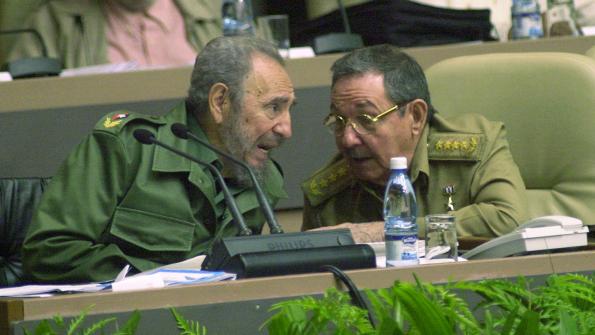December 2, 2016

News of Fidel Castro’s death on Nov. 25 at the age of 90 hit me much like news of when a once-great American figure passes on after years out of the limelight — wasn’t he dead already?
With Castro, it just seemed that way, since his health had been failing for some time. In fact, he stepped down as Cuba’s president in 2008 and his five-year younger brother, Raúl, assumed the role. At the time, many felt Raúl’s ascension to power was a mere stopgap, almost a puppet-regime with Fidel still running the show from the wings.
Now that the elder Castro has passed, Cuba truly is Raúl’s show to run.
Raúl Castro’s time to come out from behind his brother’s shadow coincides with the recent election of Donald Trump as U.S. president. Relations between the two countries have been easing, but it will be interesting what these two “new” leaders will mean for the progression of the cooperation.
U.S. President Barack Obama in 2009 started to ease the travel restrictions for Cuban-Americans. Three years later, Raúl Castro’s government lifted requirements for Cubans to obtain government permission to travel abroad. Late in 2014, Obama and Castro announced the restoration of full diplomatic ties between the two countries, and in spring 2015 the U.S. State Department removed Cuba from its list of state sponsors of terrorism. Later that summer each country reopened embassies in each other’s capitals, both which had been closed since 1961.
In March of this year, Obama became the first sitting president to visit the island nation in nearly 90 years. Shortly before that, both countries agreed to allow two-way commercial flights for the first time in more than 50 years.
USDA Secretary, Tom Vilsack accompanied Obama on the March trip to Cuba, and while there he announced that USDA will allow the 22 industry-funded research and promotion programs and 18 marketing order organizations to conduct authorized research and information exchange activities with Cuba.
As with any courtship, there have been ups and downs since the United States and Cuba began relations-renewal talks. After Fidel’s passing, two quite diverse statements came from the states. Lame duck-president Obama said Cubans “have a friend and partner in the United States of America.”
President-elect Trump issued a statement with a harsher tone, not really eulogy material, calling Castro a “brutal dictator who oppressed his own people for nearly six decades.”
Trump went on to say that he wishes to work with the Cuban regime to make a better deal between the two countries than has been started in motion by the Obama administration.
Getting U.S. pork into Cuba, the population of just over 11 million, is not going to make or break America’s swine industry. According to statistics from the U.S. Meat Export Federation in a March press release, pork entering Cuba increased 29% last year but still totaled just 6,375 metric tons. Canada (3,478 mt, +125%) was the leading pork supplier, with most of the remainder coming from the European Union (2,842 mt, +12%). Getting U.S. pork into Cuba won't have the same impact as a couple-percent growth of U.S. pork heading to China, but every bit helps.
Just as Americans are in a holding pattern to see what a Trump administration will mean to us, Cubans are waiting to see what a Raúl Castro presidency means for the future of their country. We’re all waiting to see what Trump-Castro dialogs will mean for cooperation between the two countries separated by a mere 90 miles of open water.
You May Also Like



